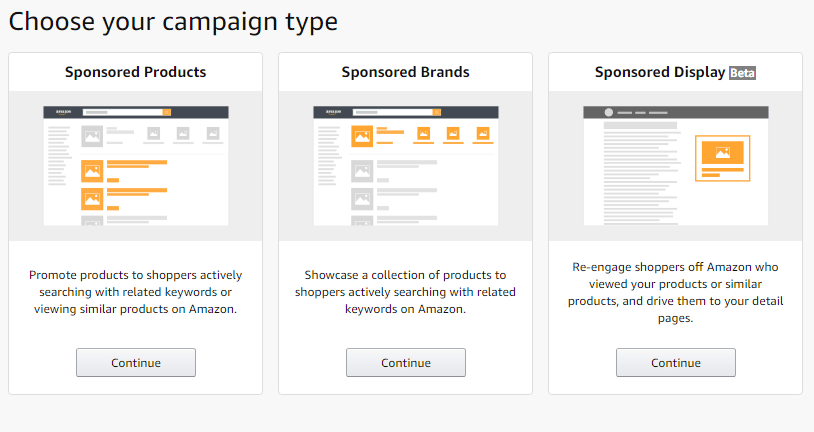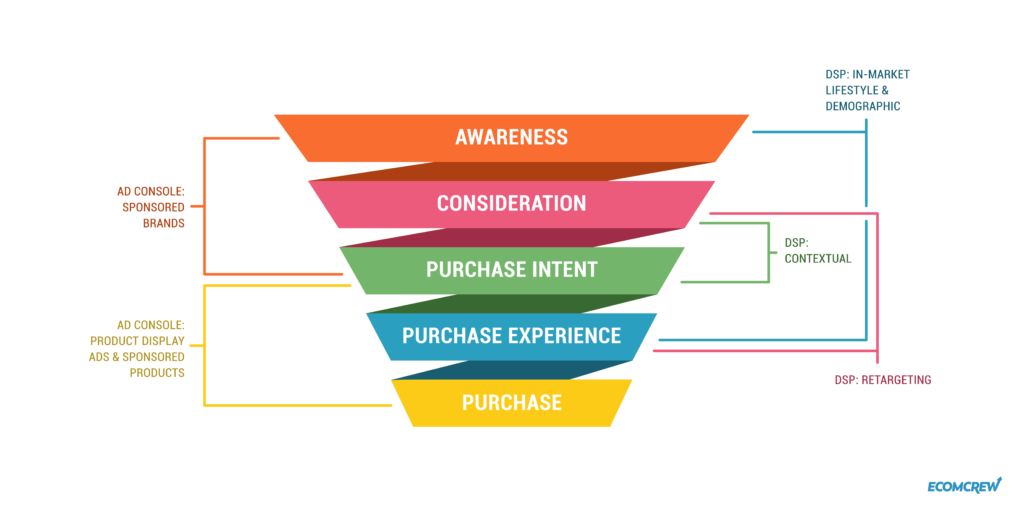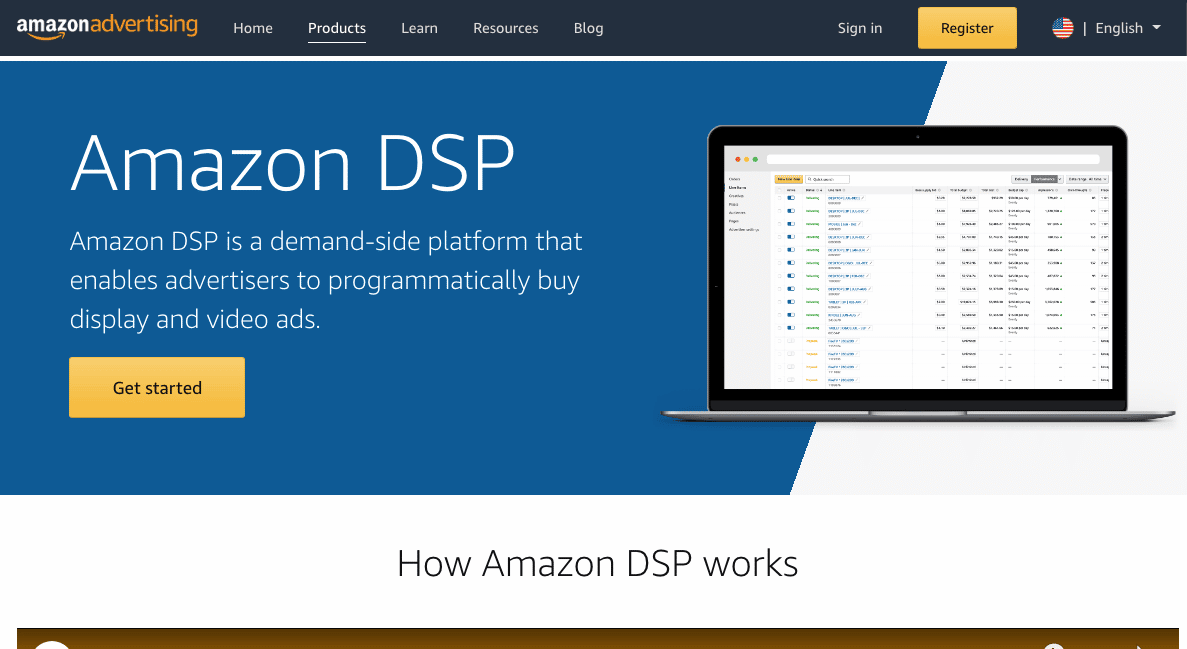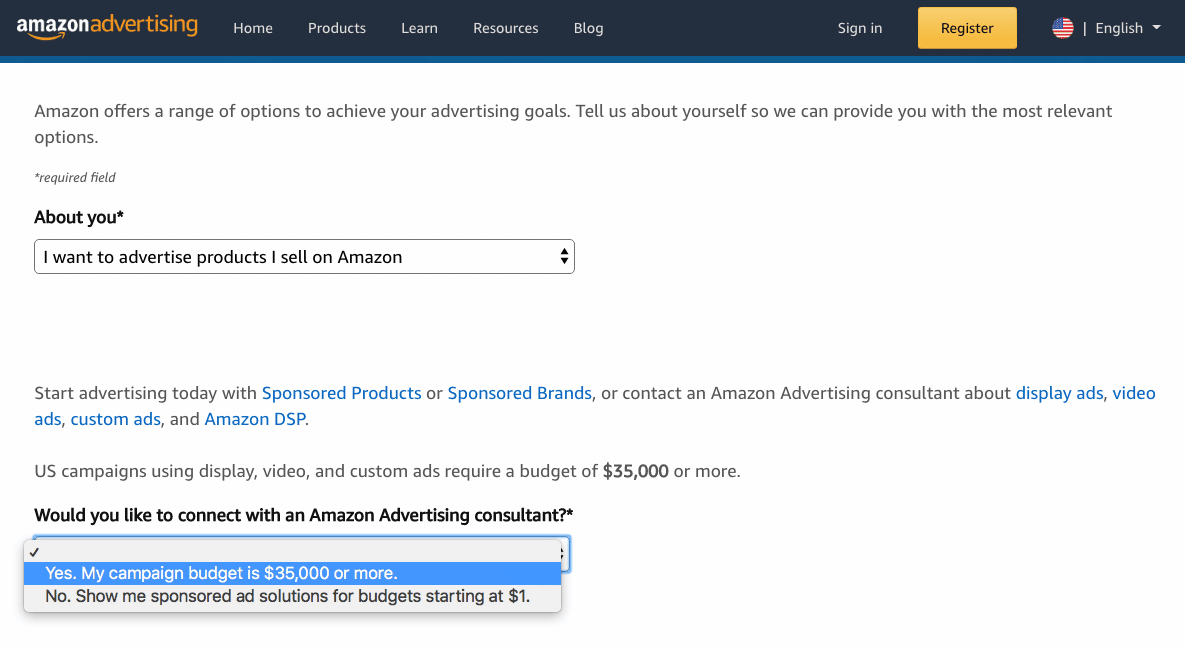What Is Amazon DSP and How to Use It
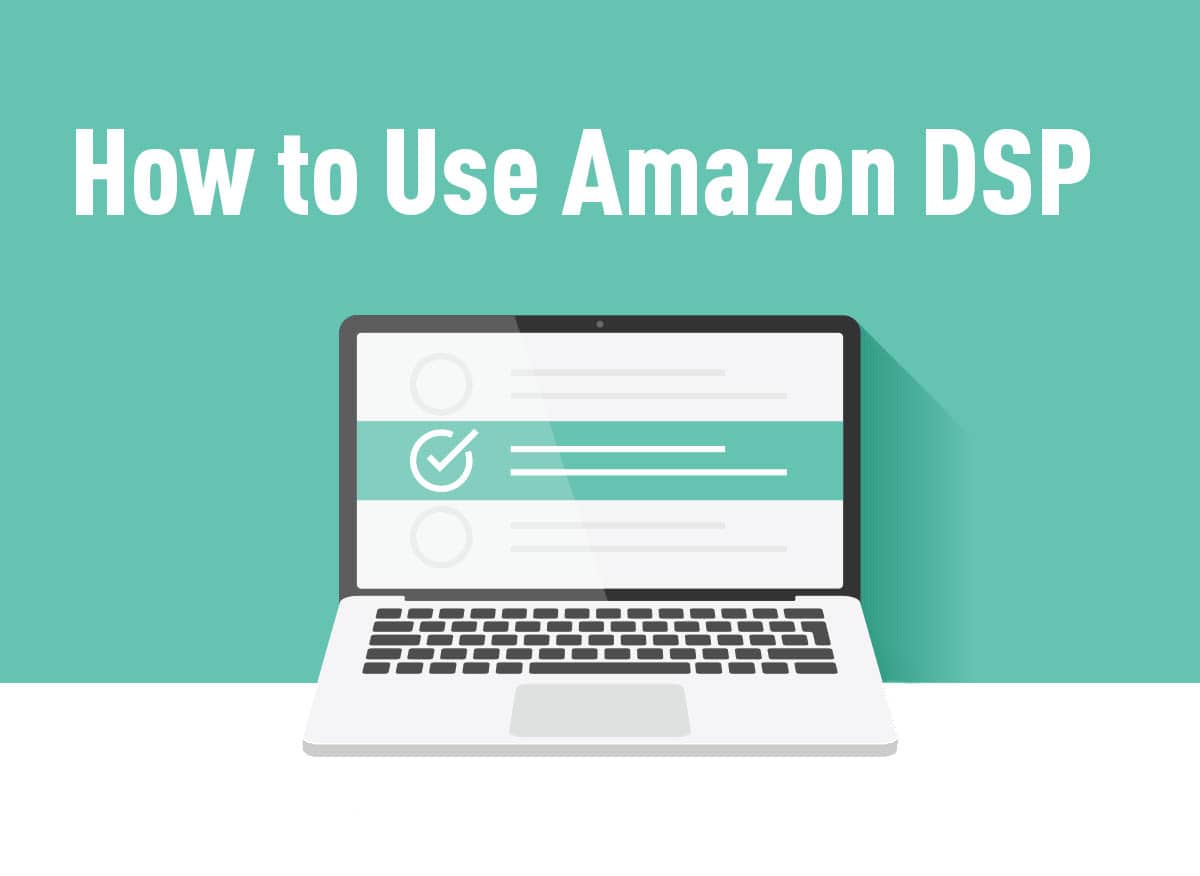
It’s hard to keep up with all of Amazon’s advertising acronyms.
Back in the day (i.e. 2018) there was Amazon Marketing Services, or AMS, for small vendors advertising on Amazon.
Amazon Media Group, or AMG, for large vendors advertising on and off Amazon.
And Amazon Advertising Platform, or AAP, which was Amazon’s demand side platform for those that wanted to target Amazon audiences off Amazon.
Then, in September 2018, all that changed when Amazon consolidated all three platforms and rebranded them under “Amazon Advertising,” in a move that turned AAP into Amazon DSP, aka Amazon Display Side Platform.
In this article I’ll walk through what Amazon DSP is, how it’s different from Amazon’s other advertising offerings, how brands can use it, and when brands should be using it.
What is Amazon DSP?
“Amazon DSP allows advertisers to efficiently reach Amazon shoppers on Amazon sites, across the web, and in mobile apps.”
That means advertisers can buy display ads (e.g. banners) and video ads both on Amazon and on other websites/mobile apps devices that are either owned by, or have partnered with Amazon.
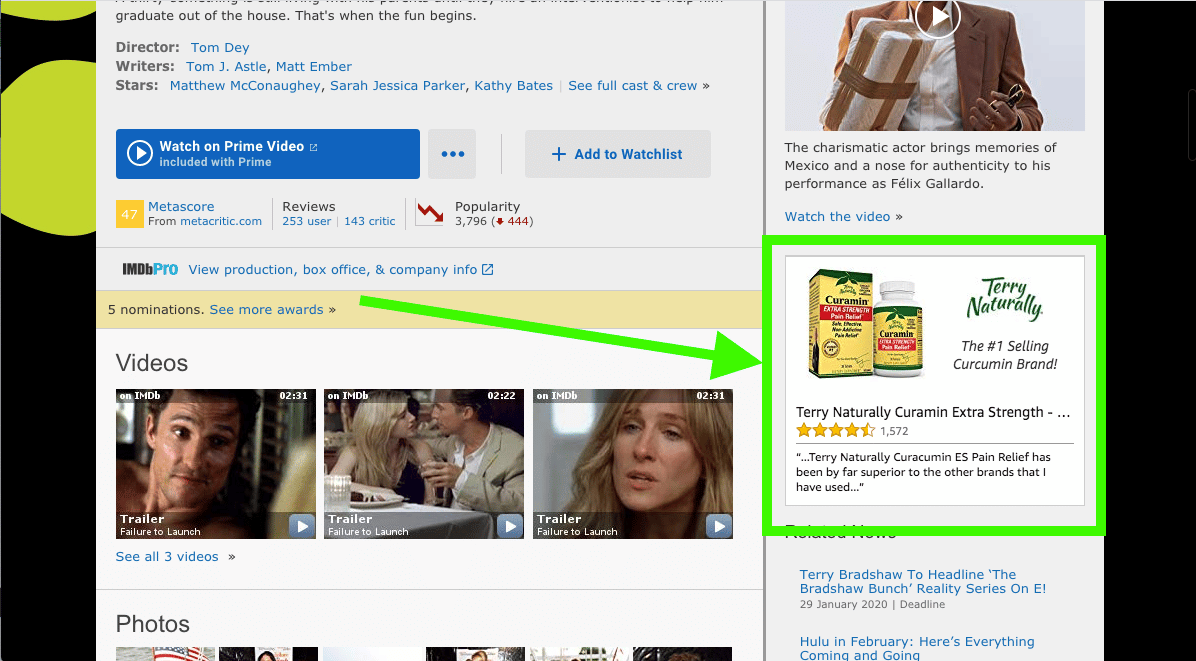
The more important part of that sentence though is “reach Amazon shoppers.”
Because what Amazon DSP allows advertisers to do is harness the power of Amazon’s huge (can’t stress huge enough) amount of first-party shopper data, both on and off Amazon.
This is behavioral shopping data about Amazon users that is only available to Amazon.
The Difference Between First-Party And Third-Party Shopper Data
Because Facebook is for stuff you like and Google is for searching for stuff, both Facebook and Google buy third-party data from other sources to fill in the gaps in their users data that will help people more effectively target those users when advertising on their platforms.
E.g. They’ll buy data about a users income bracket from a finance company, so that advertisers can target only people they know are wealthy enough to buy their more expensive product.
Amazon, however, is for one reason and one reason only: stuff you buy.
And that means they already know exactly the kind of things you’ll buy, and how much you’ll spend, because you already bought those things and spent that money on Amazon.
This is first-party shopper data. It’s direct from the source. I.e. you.
And Amazon controls it. So if you want to take advantage of it, you have to use Amazon DSP.
And, unlike third-party data that can sometimes be bought weeks or even months after it was initially compiled, first-party data is as fresh as a newborn kitten (mmm fluffy) and can be tracked in real time.
That means, the second you buy something on Amazon, Amazon can use that data to help advertisers immediately target you with ads for related products.
Which makes it extremely powerful for advertisers looking to part you with your hard-earned.
What's the Difference Between Amazon DSP and Amazon Sponsored Display Ads?
Amazon has two types of similar advertising types: DSP and Sponsored Display Ads.
Sponsored Display Ads you self-manage through seller central and you have very little targeting ability. They're essentially either on or off.
Amazon DSP, on the other hand, allows you to have very granular targeting options and with a big catch: you need to commit to around a $35,000 campaign budget to be able to use them. Ouch.
How Amazon DSP Is Different From Amazon Sponsored Ads
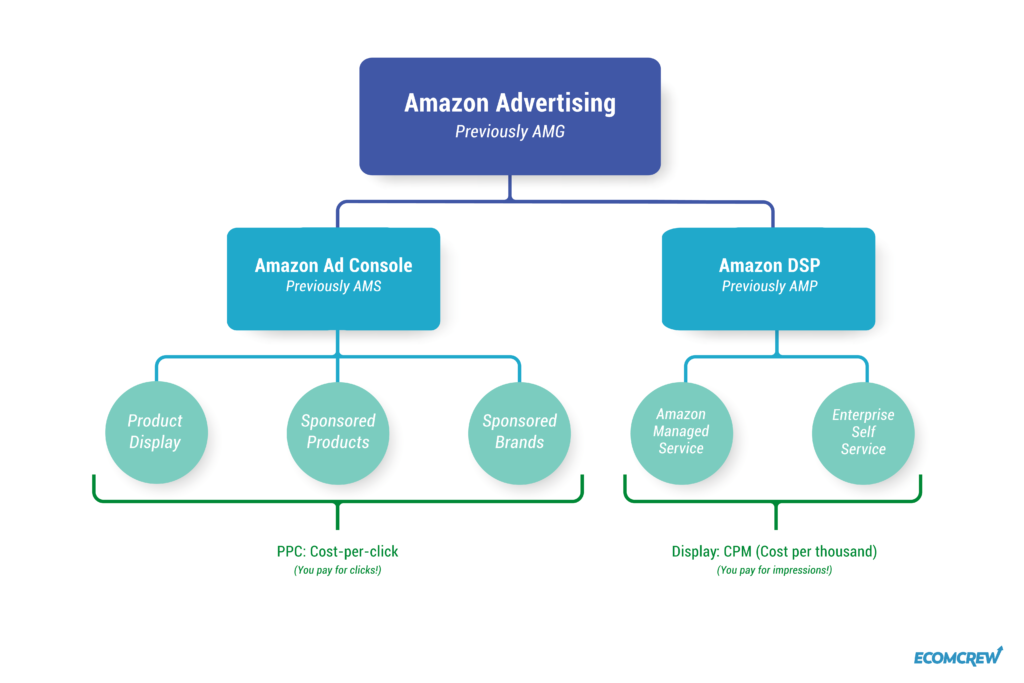
As I mentioned earlier, when Amazon consolidated all of their ad offerings under Amazon Advertising, AAP became Amazon DSP, and AMS became Amazon Ad Console.
If you’re a seller, you’re probably already familiar with Amazon Ad Console: it’s what you use to run Product Display ads, Sponsored Product ads and Sponsored Brand ads – i.e. the PPC ads that run on Amazon.
One of the main differences between Amazon Sponsored Display Ads and Amazon DSP is that Amazon DSP isn’t pay-per-click (PPC).
Instead it follows a cost-per-impression pricing model more similar to Facebook. The more people that see your ad, whether they interact with it or not, the more you pay.
Another big difference is that whereas Amazon Sponsored Display Ads are based on keyword search – an Amazon user types in ‘garlic press’ and you bid on ‘garlic press’ to get your ad in front of them – Amazon DSP ads target people by behavior.
That means your ad will end up in front of them based on the other things they bought, the categories they browsed, the detail pages they visited, the products they added to cart but never bought, and other ‘behavior’ based triggers.
And the final huge difference is that whereas sponsored Display Ads can only drive shoppers to your listing or brand store within Amazon, brands can actually use Amazon DSP to target shoppers on and off Amazon and drive them to their own website/online store, away from all the noise and competition on Amazon.
The Power Of Amazon DSP
When used in tandem with Amazon Ad Console (i.e. PPC), Amazon DSP allows brands to do what’s known as full funnel marketing.
PPC is based on search, so you can only show ads to them based on them typing in those keywords, i.e. the human equivalent of them saying “HEY I’M LOOKING FOR A GARLIC PRESS!”, so you show them an ad of your garlic press.
At this point they may have zero ‘awareness’ that your brand or product even exist – which is known as Top of Funnel (or TOFU).
Amazon DSP is different though because it allows you to put display ads in front of people who, through their behavior, you know have already shown an interest in your product, brand, or similar products.
By this point they’re in the ‘Middle’ or ‘Bottom’ of your funnel, and you’re ‘retargeting them’, something that has never been possible using Amazon PPC.
It’s possible to reach shoppers at any stage of your marketing funnel because Amazon DSP allows advertisers to segment audiences through 6 unique targeting options:
- Behavioral segments – Audiences who have shown specific behaviors such as buying intent in a specific Amazon sub-category in the previous 30 days
- Lifestyle segments – Audiences who demonstrate search and purchase behaviors associated with a common lifestyle, e.g. Cross Fit.
- Contextual segments – Audiences based on what they are browsing right now to show ads that are contextually relevant.
- Re-marketing segments – Allows you to target shoppers that have searched for, viewed, or purchased your products or similar products.
- Audience Lookalike segments – Similar to Facebook lookalike audiences, allows your to find audiences with buyer behavior similar to people that have already bought off you.
- Advertiser Audiences segments – Allows you to retarget shoppers that have visiting your website (by using a tracking pixel), and leverage other assets you might have like email lists and CRM.
The Different Types Of Amazon DSP Ads
Amazon DSP ads can appear in any of the following forms:
- Desktop Display Ads
- Mobile Banners Ads
- Mobile Interstitial Ads
- Image & Text Ads
- In-stream Video Ads
Where Amazon DSP Ads Appear
Advertisers can use Amazon DSP to reach audiences on:
- Amazon marketplaces (i.e. Amazon.com, Amazon.ca, etc)
- Fire TV
- IMDb
- Freedive (IMDb Streaming)
- Kindle
- Apps
- Published Partners
- Third Party Exchanges
Who Can Use Amazon DSP
Amazon DSP is available for any seller on Amazon, with a number of caveats.
Unlike regular PPC that can be managed by sellers themselves, Amazon DSP can only be run on a seller’s behalf through either Amazon (they manage the account on the seller's behalf) or through a recognized partner agency that have been authorized by Amazon because they have gone through their training.
In order to run it through an Amazon-managed account you must commit to a minimum campaign budget of $35,000.
The partner agencies allowed to run advertising through Amazon DSP for clients are slightly more flexible on budgets, but the reality is this is still only really for big brands who are close to maxing out their ad potential on Amazon and so need to look beyond the platform to continue to scale.
If a brand isn’t already spending $200K-$300K a year advertising on Amazon, adding DSP probably isn’t going to make sense. However, if they’re running a budget of $500K+, DSP should definitely be a part of that.
How To Learn More About Amazon DSP
As I just mentioned, brands can either advertise through Amazon DSP by signing up for an Amazon-managed account: with can be done here.
Once you click the get started button you’ll be asked a number of questions before and then asked to submit a form with all your details so that an Amazon Advertising consultant can get back to you.
The other option is to advertise through an agency that’s been authorized to use Amazon DSP by Amazon.
Unlike Amazon’s other services, like IP Accelerator, there is no centralized hub where you can find these agencies.
Your best is to literally Google ‘Amazon Demand Side Platform’ and work your way the ads and organic results that come up.
Why Amazon DSP Is Important For Big Brands
Traffic generation has always been the lifeblood of any online brand (and offline too, really).
If people don’t see what you’re selling, and you don’t have a consistent flow of those people, no matter how good your product is you’re pretty much dead in the water.
And that was the huge benefit of Amazon when they first embraced third-party sellers and started the FBA program: They brought a huge, consistent flow of traffic to the party.
You could simply throw your products on there, get a handful of fake reviews, and sit back while Amazon did the rest and shepherded eager shoppers right to your front door.
However, as more and more sellers have begun to sell on Amazon all that has changed.
Competition to get the attention of buyers on Amazon has become fierce. The cost of ad space (PPC) in the most competitive categories on Amazon has skyrocketed.
So what’s the answer?
The one place bigger than Amazon… the rest of the internet!
Amazon now wants sellers to bring traffic to Amazon, and pay for the privilege. And in return they get to harness Amazon’s powerful first party shopper data and which let’s them pinpoint target the exact shoppers that are likely to buy their products as they browse the internet off Amazon.
Conclusion
Amazon DSP isn’t really relevant to new sellers and smaller brands selling on Amazon.
However, it makes a great addition to brands that already having a healthy ad budget and are looking to continue scaling and maintaining year-on-year growth by harnesses the power of Amazon’s first-party shopper data to attract new customers, and retain existing customers, from the vast world of shoppers that lie beyond the walls of Amazon’s marketplaces on the rest of the internet.
